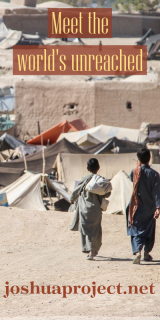The Explosion of New Missions Within the Non-Western World

Some years ago I got a letter from the editor of a World Council of churches publication inviting me to write an article for their journal. The International Review of Mission. Me t this was an unusual opportunity and proceeded immediately to develop what I felt was an important question even to the World Council of Churches.
I was astonished to find, after sending the article in, that the very title of the article was completely misunderstood. Their objection was that they did not want to encourage the development of further western missionary imperialism. They assumed that I was talking about the expansion of western missionary forces.
Now, as a matter of fact, I do very much believe in the necessity of the expansion of certain types of western missionary activity, and I will not for a moment deny my own convictions on that point.
However, what they did not understand in my article was that my object was simply to describe an existing phenomenon, which at that time was so little known that you could hardly get at it with the use of ordinary words! My title was, "the New Missions and the Mission of the Church," and as the article itself. unfolded; it was eminently obvious (I thought!) that I was talking about the development of new missions in the nonwestern world not the development of new western missionary activity In the non western world.
What I was saying, in effect,, was that no matter what the policies ofthe World Council were with regard to the appropriate retreat of westem missions, there was already beginning to be visible a new' phenomenon' virtually totally new on the face of the earth.. whereby the mission field churches, themselves were beginning to form mission societies and send, their own' missionaries to other people groups near and far from them.
This was a force over which the World Council had no control. It is a force over which western mission agencies have no control. They can, indeed, help to promote the movement, but there is little they can do to stop the movement!
While I was writing this article (back in 1970) I must admit I had first encountered this concept of what is often today called "third world missions" in a book written in 1967 by Dr. Alan Tippett entitled Solomon Islands Christianity
It was there I first encountered the intriguing evidence of a major missionary force consisting of Pacific Islanders themselves. It was there I first read about "the Melanesian Brotherhood" which sent missionaries out to 90 different langUages in the Solomon Islands area and even further away.
It was only a little after that book first appeared, giving credit to indigenous church missionary outreach, that another writing focused on this phenomenon': It was an article by Charles Forman on the outreach of Pacific Islanders going far beyond"what any western missionaries were able to do.
As a matter of fact, 1 guess it 'is' only fair to say that probably only in the South Pacific has this degree of mission activity thus far appeared to be the initiative of the national churches, themselves.
All missionaries in all epochs of history have quite obviously been"nationals.". All western missionaries are from their own national churches, of course. There can hardly be anything new about nationals becoming missionaries. What was new to many people, myself included back in 1970 or perhaps when Tippett's book first hit the market 1n1967, was the fact that significant missionary work can be 'performed and actually had been performed by the so called mission' field churches of the modern era.
In my own case; I got quite interested in the subject in 1970 and actually encouraged some of my students at Fuller Theological Seminary to do research on these new entities appearing here and there in the non western world.
In 1971 I stood up, somewhat hesitantly, at the beginning of a very large conference of missionaries and mission executives at Green Lake, Wisconsin, and asked whether the conference was going to cover the subject of mission initiatives arising in the context of mission field churches.
There was a hasty consultation on the platform, and the answer came back that that subject was outside the bounds of the agenda of the conference.
The conference focused on the relationship of western mission agencies and non western churches That was the main concern of the conference., The sending churches were in the picture.. The missionaries were in the' picture. The mission agencies were in the picture. The national churches were in the picture. But there was no room on the agenda for the mission agencies from the national church.
Fortunately, following the conference Peter Wagner was commissioned to write a book summarizing postconference impressions. It was entitled Church/Mission Tensions Today,and was published by Moody Press in 1972. He invited me to write a chapter entitled; "The Planting of Younger Missions," which is a takeoff on the often used phrase "the younger churches."
That chapter of mine focuses very specifically upon the responsibility' ofwestern. mission agencies to take the initiative in the founding and the development of such mission structures.
Alas; to this day, except for Cliff Holland's initiative and the outstanding work of several societies, such as the Christian and Missionary Alliance which has steadfastly promoted the mission vision of its own overseas churches, there is very little initiative on the part of western societies in the development of these new entities in the foreign field.
Thus, that chapter in 1972 has gone mainly ignored, it would appear.
But in 1973 Wagner went one step further. He corralled three seasoned missionaries studying at the Fuller School of World Mission and persuaded them to work together in the production of a book, Missions From The Third World which was published that same year. This book by Larson, Pentecost, and Wong really hit the fan. It indicated the existence of over 200 societies in the third world, with the possibility of some 3,000 missionaries being sent out by them, and the results of this study reverberated all through the mission world. It was no longer possible to ignore or to overlook the phenomenon of non western mission agencies.
The next major breakthrough was a pair of books by Marlin Nelson a missionary in Korea who came out with Readings in Third World Missions; which brought together a number of articles from many. sources, and a book of his own,' The How and The Why of Third World Missions These two books solidly established the existence and, the Importance of such organizations for anyone who would read them. But of course they were simply invisible to most Christian leaders and thinkers, except for a few mission executives who follow literature of this kind. They appeared in 1976.
Nelson's continuing influence in the area of third world missions is seen in the 1979 "Directory of Korean Missionaries and Mission Societies" now out in a 1982 edition, which lists 147 mission organizations with 323 missionaries working in 37 countries.
The first world level meeting at which representatives of this type of mission agency showed up in force was the 1980 meeting at Edinburgh. There, fully one third of the mission agencies represented and one third of the delegates who were sent by those agencies (57 and 88, respectively) were from nonwestern mission sending agencies!
Not as widely publicized as other world level meetings in 1980, the Edinburgh conference, with its accompanying International Student Consultation on Frontier Missions, was a truly significant meeting. Three out of four of the plenary papers in the morning were assigned to third world mission leaders. And the entire conference obviously displayed the thrilling and exciting presence of these mature men of vision, disciplined and devoted, who had come from all over the world. I do not believe that I will ever forget that conference. It almost seems my entire lifetime divides into two parts, before and after that conference
In a certain sense, the major importance of the conference was to offer a forum in which these third world leaders could for the first time rub shoulders on a world level with the western mission leaders. This was one of the chief accomplishments of that meeting, which has been influential in many other ways as well.
That, in fact, is where I first met Obed Alvarez.. He and others from Peru, as well as some of their missionaries in London, were on the ground floor, and it was exciting to sense their own exuberance and interest even then. He would have been 23 years old at that time!.
Meanwhile the sister conference of younger people, from the western world primarily, had many who were older than this one young executive from Latin America. But Alvarez did not come to the Student Consultation. He came as an executive to the World Consultation on Frontier Missions; which was the main conference.
Undoubtedly, our American school system, which keeps people in school for a huge chunk of their lifetime, actually postpones the involvement and the maturation of our own younger leaders. These might otherwise be carrying responsibilities as significant as, those carried by Alvarez if it were not for the prolonged educational experience which we have come to prize so highly.
By now, of course, there are so many third world mission leaders that this is no place to start listing them all off. We will try to make references to them from time to time in succeeding issues. One organization, however, must be mentioned: the International Missionary Advance, founded in 1976. This organization exists for the sole purpose of finding, fostering, or even founding third world mission agencies. Then there is CNEC which very carefully selects key, nationals to support, always as part of some overseas team in which'they function under authority. Christian Aid Mission also stresses overseas nationals but unlike any other mission I know feels it necessary, to denounce at every opportunity all traditional mission¬work. (I'm glad I cannot name any other agency that is so blindly derogatory of other groups.)
What we need to realize is that the pattern exemplified by Cliff Holland (highlighted in the December 1982 issue of Mission Frontiers is absolutely sound. Older agencies, have the best opportunity of all to find, found and foster new missions from within the third world. More and more nationals are directly sup ported from the West. But there must be at least 100, 000 who right now are indirectly supported or nurtured or trained or sent out by the combined efforts of traditional missions and the national churches produced by them. Obed Alvarez' mission for example, does not ask for support from the U. S. except for professors, now and then, for his school of missiology.







comments